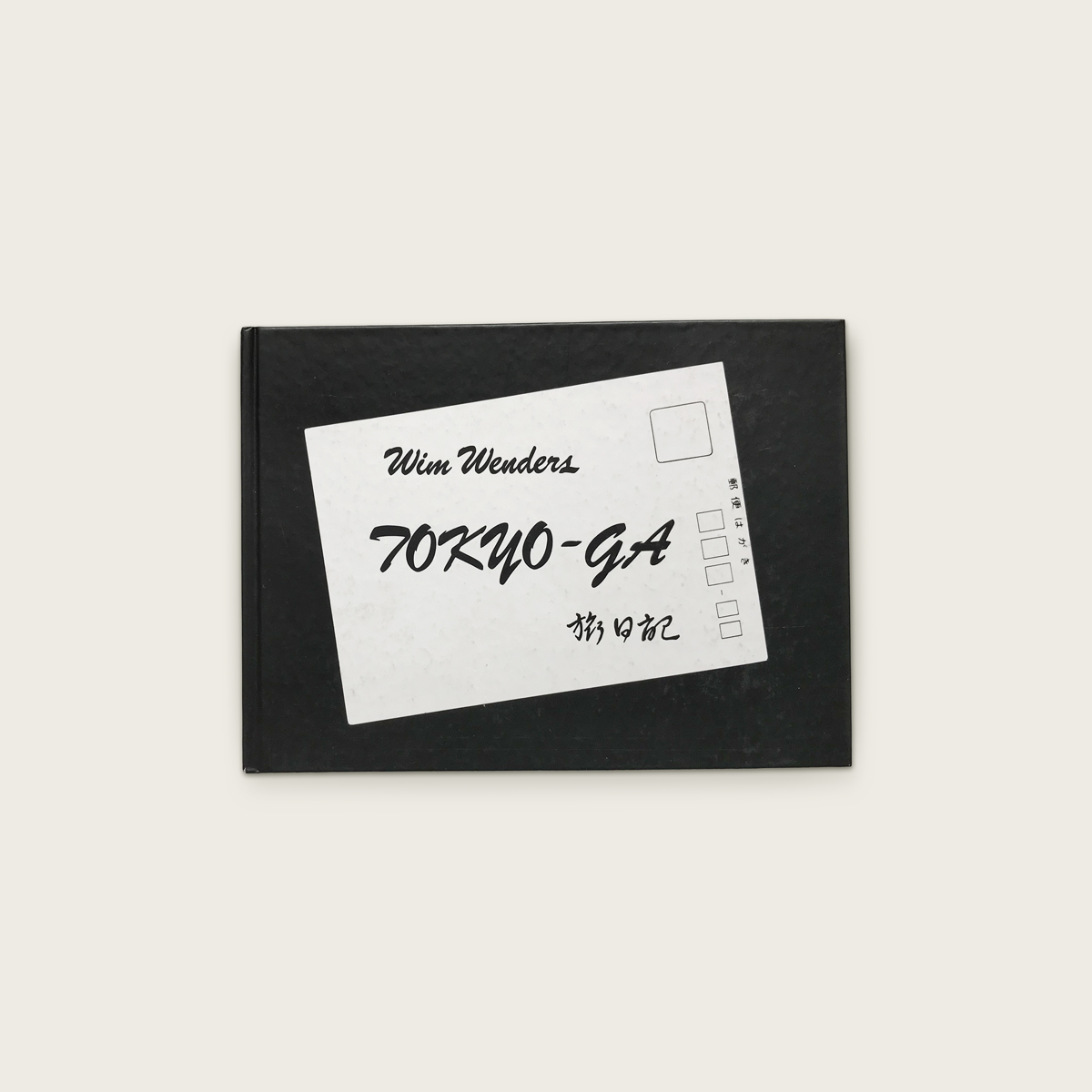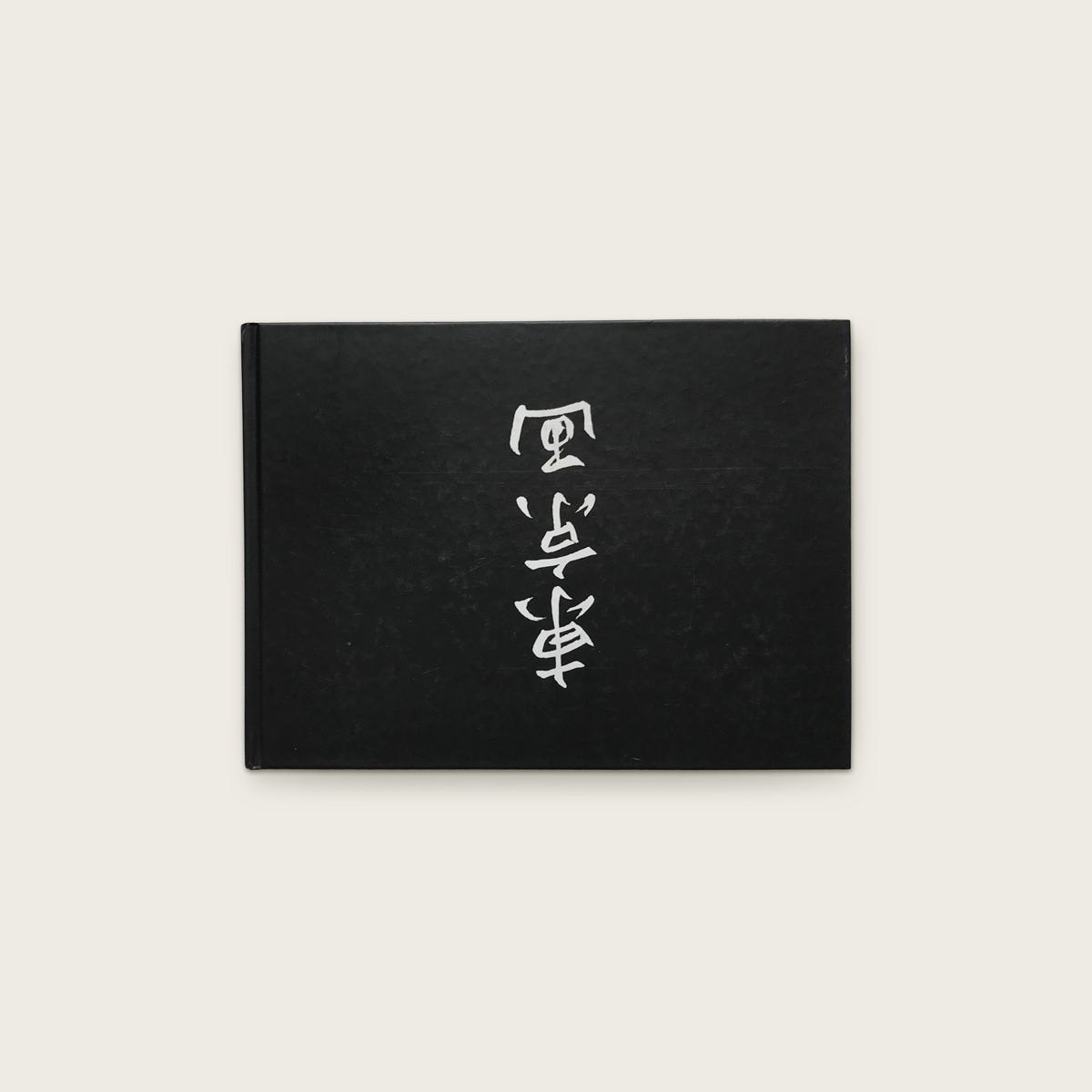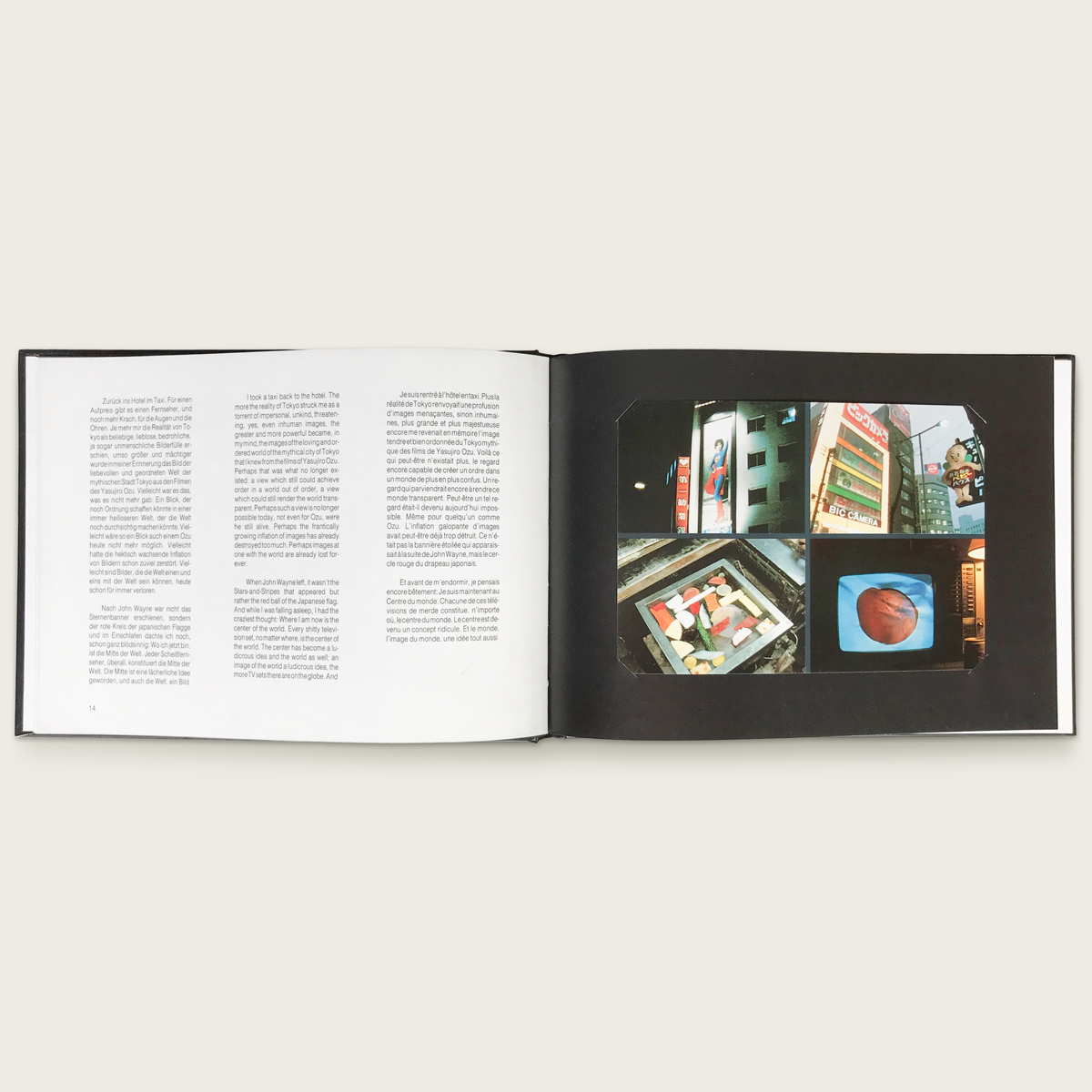Tokyo-Ga
by Wim Wenders
Berlin: Garlev-Verlag; Paris: Longue Distance, 1986. First and only edition. Small 8vo (15,5×21,5cm), illustrated black boards, with tipped in colour photographs. 64pp. Text in English, French and German. A touch of edge wear, else fine.
Wim Wenders described Tokyo-Ga as a cinematic diary, which moves in the same sphere as Chris Marker’s Sans Soleil. Both films are an outsider’s take on Japan and both are dealing with memories. While Sans Soleil is about the memory of a traveler and his images; Tokyo-Ga is a reminiscents of Yasujiro Ozu and the Tokyo of his films.
In admiration of the legendary Japanese director Yasujiro Ozu, Wim Wenders and his cameraman Ed Lachman traveled to Tokyo in the early spring of 1983, retracing the steps of Ozu’s life and work in Tokyo. Wenders was looking for the Tokyo he had seen in Ozu’s films, wandering into pachinko parlors, public parks and a plastic model factory, in the hope to capture something familiar in the new.
Tokyo-Ga is a time capsule of early ’80s Tokyo and contains the entire transcript of the film in English, French and German. The book beautifully conveys the idea of a cinematic diary through its design. The small format gives the book a very intimate feeling, which is supported by tipped-in colour photographs that can be taken out and function as postcards. It is fascinating that Wim Wenders and Chris Marker met during the filming of Tokyo-Ga:
“That night I met the French filmmaker and cat lover, Chris Marker, in a bar in Shinjuku, a bar bearing the name of one of his films: La Jetée. Only in the coming days was I to see his new film, the beautiful Sans Soleil, in which there are images of Tokyo inaccessible to the camera of a foreigner like me. Like so many photographers, Chris Marker doesn’t like to be photographed. But tonight he did risk showing an eye after all.”
Out of stock







![[Chris Marker] Filmstudio 43: Zeitschrift für Film](https://chunkingbooks.com/wp-content/uploads/2021/05/filmstudio_01-300x300.jpg)
![[Chris Marker] Oasis: Fourth World - Semiotext(e)](https://chunkingbooks.com/wp-content/uploads/2021/04/oasis_01-300x300.jpg)
![[Chris Marker] L’estampille art et artisanat n°36 Octobre 1972](https://chunkingbooks.com/wp-content/uploads/2021/04/artartisanat_01-2-300x300.jpg)